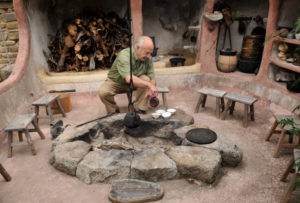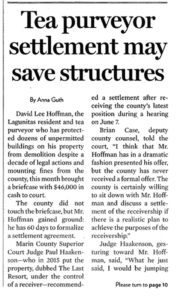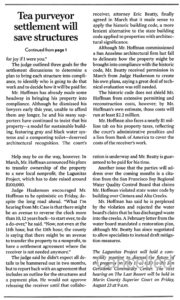Aug. 21, 2019
Supervisor Dennis Rodoni, Marin County Board of Supervisors
Judge Paul Haakenson, Marin County Superior Court
RE: The Last Resort/The Lagunitas Project
Dear Supervisor Rodoni and Judge Haakenson:
The Marin Group Sierra Club, representing 6600 members in Marin County, supports the reinstatement of the Marin County Architectural Commission resolution that all 36 structures on the 2-acre property of David Lee Hoffman in Lagunitas constitute a cultural and historic landmark of local importance.
The work of David Lee Hoffman’s architectural, ecological vision, The Last Resort, stands as a living model of what we can and should be doing in order to live in a truly sustainable way on the earth. As a representation of the “Back to the Land” movement of the 60’s, it is an outstanding example of regenerative design, and in line with directions that communities are calling for in efforts such as Project Drawdown Marin.
In the spirit of “waste is not waste until it’s wasted”, The Last Resort is an environmental model of sustainable and harmonious living. It attempts to assimilate both natural methods from the past with modern know-how to create a living system that effectively demonstrates possibilities of thriving in a non-polluting healthy environment. Its mission is to discover and perfect practical low-cost sustainable methods for waste management, water re-use, and food security. To this end, a unique integrated bio-management system has been successfully developed.
While the land use of The Last Resort property is unconventional, we acknowledge that unconventional approaches will be needed, in order to overcome the global environmental challenges facing humanity.
Under normal circumstances, the Sierra Club would be inclined to challenge property use that involved over-building. In this case, whatever its origins, we now feel that there are vitally important overriding considerations in favor of preservation.
In the case of The Last Resort property, we feel that there are two main overriding considerations in favor of preservation:
1. On The Last Resort property, Mr. Hoffman has demonstrated a nearly closed-loop cycle for waste treatment and food production, on a very small property. This is anextraordinarily powerful and unique working example of sustainability, from which, we believe, many individuals and land-use designers can learn, to the benefit of humanity.
2. Mr. Hoffman has freely treated the property as a community resource, opening the property to tours by international land-use designers, individuals interested in small scale sustainable land-use, and even local school field trips, as well as offering a meeting space. This is precisely how we feel the sustainability aspect of this property should be regarded – as a living, working model that attempts to demonstrate possibilities for small-scale, closed-loop sustainable living – one that shares its efforts and lessons learned with others, while remaining a real-world residence.
We are very grateful for your recent efforts to reach a compromise that preserves this property as a historic landmark. As the process of working with Mr. Hoffman progresses, we also express the imperative to reinstate Marin County’s own Architectural Commission’s ruling that David’s site is historically important. This would allow the use of the California Historic Building Code asa guideline and protections this code offers. Reinstating the Commission’s ruling is ethical and allows for long-awaited progress in complying with reasonable code upgrades and an ultimate resolution.
We feel that Mr. Hoffman is a visionary who has pioneered solutions to climate change. These solutions lie in the very structures and systems that would be destroyed if the Commission’s unanimous ruling continues to be discounted or ignored. We believe the demolition of thiswork would be a black mark on the face of Marin County, and a significant lost opportunity to protect and preserve this unique site and its historical import, past and future. We do not want to lose The Last Resort.
We request that Marin County, through their receiver, reinstate their own Commission’s unanimous ruling, which declared that David’s property deserves local historic status. The reinstatement of the County Architectural Commission ruling would be the final step in bringing closure to the issue of preserving as much of The Last Resort site as possible without interfering with the work of the receiver.
We believe that if Mr. Hoffman loses The Last Resort, we all lose — and we believe that the solution is outlined by the steps presented to you by The Lagunitas Project.
We are truly thankful to have you addressing these issues.
Sincerely,
Judy Schriebman, Chair, Marin Group Sierra Club
MARIN COUNTY GROUP
Protecting the Marin environment since 1968, scmaringroup@gmail.com
2530 San Pablo Ave., Suite I, Berkeley, CA 94702 sierraclub.org/san-francisco-bay/marin


